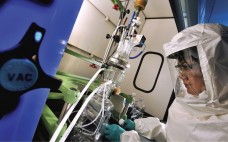Enthusiasm in the United States over opportunities for biosimilars has waned since such products were first launched in Europe. The hesitation stems from confusion and uncertainty surrounding regulations. Manufacturers and suppliers are looking for guidance from the US Food and Drug Administration (FDA), which has promised guidelines that are still in process after five years. Even naming protocols for biosimilars are clogging the works. And in the absence of coherent FDA guidelines, many US states are haphazardly implementing laws concerning…
Regulatory Affairs
Guidance Is Lacking in the European Biosimilar Regulatory Framework: Considering the Dynamic of Quality Profiles in Development
Biopharmaceutical medicinal products (biologics) had an estimated global commercial market size of US$100 billion in 2013. Because they are more complex than small molecules — and defined by the uniqueness of their manufacturing processes — the generics approval process is not applicable for biologics. Article 10(4) of European Medicines Agency (EMA) directive 2001/83/EC was amended in 2004 in response to the industry’s desire for market access by launching a “similar” biologic abbreviated approval pathway. Leading the subsequent process, the EMA…
Process Challenges of Antibody–Drug Conjugates
With two products now on the market, and a host of others in clinical trials, antibody-drug conjugates (ADCs) are slowly becoming a big business. Designed to deliver extremely active cytotoxic drugs that are otherwise undosable, they take advantage of the targeting ability of a specifically designed monoclonal antibody (MAb) to “shield” a highly potent API (HPAPI) as it travels through a patient’s bloodstream after administration. Once the antibody reaches its target on the cancer cell, it will release the payload,…
Qualification of Scale-Down Bioreactors: Validation of Process Changes in Commercial Production of Animal-Cell-Derived Products, Part 2 — Application
Here we apply our approach to validation of animal cell culture process changes using qualified, scale-down bioreactors. As described in Part 1 (including Table 1, Figures 1 and 2, and References 1–23), the goal is to facilitate implementation for the benefit of both the patients and industry. “Qualification of Scale-Down Bioreactors: Validation of Process Changes in Commercial Production of Animal-Cell–Derived Products, Part 1 — Concept” appears on pages 38–45 of BioProcess International’s May 2014 issue. Process changes often entail validation,…
Cell Therapy Will Transform the Future of Medicine
The third annual IBC Cell Therapy Bioprocessing conference was held in Bethesda, MD, on 21–22 October 2013. It brought pioneers in the development of cell-based therapies together with companies that have enabling technologies, such as bioreactors, cell culture media, and advanced monitoring software. After the conference, I discussed the highlights and key themes coming out of the event with Dr. Phil Vanek, general manager of cell bioprocessing at GE Healthcare Life Sciences in Westborough, MA. Also an instructor for advanced…
Essentials in Quality By Design
Quality by design (QbD) is a systematic approach to drug development. It begins with predefined objectives and emphasizes product and process understanding and process control, all based on sound science, data-based decision making, and quality risk management (QRM). As introduced by the US Food and Drug Administration (FDA), QbD brings modern drug development methodologies to chemistry, manufacturing, and control (CMC) teams working on biologics, pharmaceuticals, and vaccines. The innovations associated with QbD are not so much the development concepts (which…
Cost-Effectiveness and Robustness Evaluation for Biomanufacturing
As the biotech sector has matured, it has come under increasing economic and regulatory pressures for continuous improvement in both drug development and manufacturing. As a result, assessing the value potential of alternative strategies has become critical to decision-making in areas such as bioprocess and facility design, capacity sourcing, and portfolio selection. Related decisions typically involve large cash expenditures and thus have a direct bearing on the feasibility of business units and whole companies. Figure 1: () Making such decisions…
Quality Risk Assessment and Management Strategies for Biopharmaceutical Companies
You’ve probably been hearing a lot about risk assessment in recent months. Indeed, some 15 times more articles have been printed referencing the concept over the past year relative to a 12-month period just three years ago. That truly represents a geometric progression. Unfortunately, very few authors have been able to disambiguate the different methods or provide insight into this time-tested, multiple-industry philosophy that at its core uses good science to make better decisions. When we undertake the challenge to…
Benefits of Business Process Management
The biopharmaceutical sector is synonymous with innovation. There is a general sense, however, that biomanufacturers often don’t “have their houses in order” when it comes to adopting efficient processes, communications, and reporting tools. Indeed, many companies still rely on outdated methods to support areas such as research and development (R&D), manufacturing, clinical trials, and sales and marketing. That is especially true now that the biopharmaceutical sector is undergoing an acquisitory revolution of both rival companies and products. The industry has…
Biosimilar Products
The Chemistry, Manufacturing, and Controls (CMC) Strategy Forum held on 22 January 2012 in San Francisco, CA, focused on selected scientific and regulatory aspects in the development of biosimilar products. Such products are an increasingly important area of interest for both the biopharmaceutical industry and its regulatory agencies. Biosimilars are highly complex, so scientists have been unable to demonstrate identity to a level typically possible for small molecules. Consequently, specific scientific and regulatory approaches are required to ensure the high…





